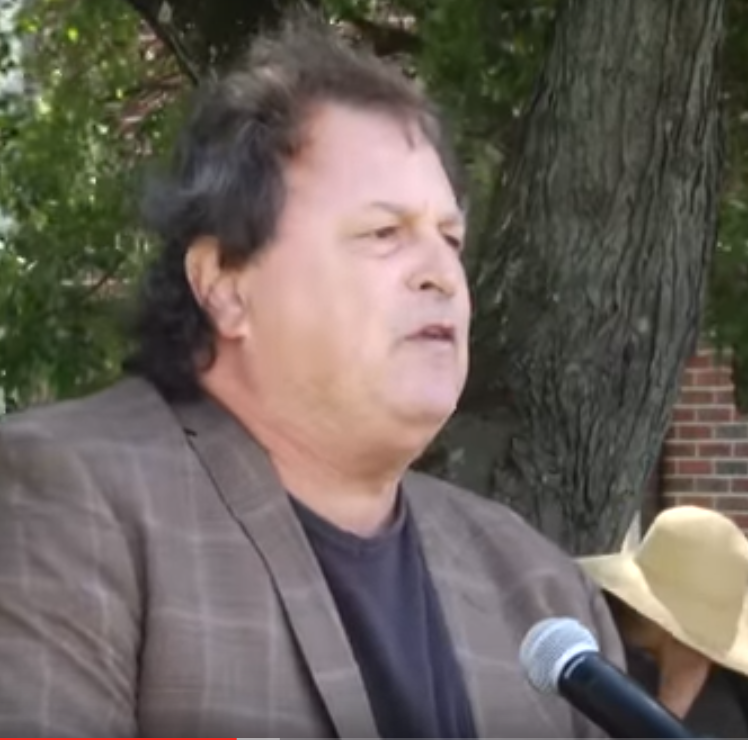by Steve Palm-Houser
SEPTEMBER 20, 2016
On September 14, two candidates for Franklin County Prosecutor answered questions about how they would respond to officer-involved shootings, if elected. As the candidates’ forum at Mt. Olivet Baptist Church proceeded, only one mile away 13-year-old Tyre King was pursued and shot multiple times by Columbus police. He was taken to Nationwide Children’s Hospital and pronounced dead a few minutes after the candidates’ forum ended.
Adrienne Hood spoke at the beginning of the forum. Her son Henry Green was killed by Columbus police on June 6. “It’s unfortunate that the person who can give me the justice that my son deserves is not here,” she said, indicating the empty chair reserved for Ron O’Brien, the incumbent County Prosecutor candidate. O’Brien has not responded to demands by Green’s family to indict the officers who shot him and appoint an independent prosecutor to oversee the case.
Diversion programs
People’s Justice Project organizer Tammy Alsaada posed the first question to Democratic candidate Zach Klein and Green Party candidate Bob Fitrakis. “Would you keep families together by expanding diversion programs for youth, for addiction, and for mental health issues in underserved and overlooked communities?” she asked. “And how would you help keep people out of the system and get the treatment they need?”
“Yes,” Zach Klein said. “I’m a firm believer that the cycle of incarceration breeds a cycle of poverty, which breeds a cycle of incarceration. I think we need to be aggressive in expanding our diversion program to ensure that there is treatment” for drug addiction and mental health issues. “We also need a diversion program that recognizes when some people turn to crime to make ends meet. It may be a small number of people, but there are people who lack opportunity. Jail is for people that we’re afraid of, not for people we don’t know what to do with.”
There is currently “no rhyme or reason or policy directive out of the prosecutor’s office for who is eligible for diversion,” Klein said. “It’s all at the whim of whether the prosecutor knows the defense attorney. That’s not fair, open, or transparent.”
Bob Fitrakis also responded “yes” to Alsaada’s question. “As prosecutor I will not arrest anyone for drug possession,” he said. “It’s a medical problem, and that’s how it will be handled.” Instead, he would go after the people involved in heavy drug trafficking. “Many of these are connected with legitimate businesses. The people who fueled the crack epidemic in this town in the 1990’s were Southern Air Transport. They were bringing heroin and other drugs into this country. Instead of going after someone with ten balloons in their stomach, let’s go after the large aircraft that are coming in by the planeload, contaminating these communities.”
Fitrakis cited the recently revealed admission by Richard Nixon’s domestic policy chief John Ehrlichman that the War on Drugs was started not to curb drug use, but to marginalize blacks and the hippies who opposed the Vietnam War. “This has been a systematic campaign against the poor community, against the black community,” he said. “We need to redefine the problem.”
Equal protection under the law
“Research shows that mass incarceration disproportionately affects low-income people, and people of color,” said Jasmine Ayres, field director for the Ohio Organizing Collaborative. “We need more information to make evidence-based decisions on policies and practices. For example, black people in Franklin County are 3.8 times more likely to be in jail than whites.
“Will you collect and share demographic data — including race, gender, and income level — on who is charged, what they are charged with, what plea is offered, and what bail is recommended? And how would you set alternative metrics to evaluate your staff?”
“Will I comply with the open records law? Yes,” Bob Fitrakis responded. “There needs to be full transparency. For many years, before the Free Press went after the judges, they were double-bonding people. The bondsmen were running the court until they were exposed.
“I’m going to remove the jump-out boys,” he said, referring to plainclothes police officers who patrol so-called “crime hot-spots,” a code word for neighborhoods with many poor, black, and Latino residents. “They post white police, walking around with money, pretending they’re on drugs, acting like bait. They should be removed or charged criminally, because they’re causing the violence. They need to get off the streets.”
Fitrakis recalled teaching police officers about the U.S. Constitution in 1980. “They weren’t really receptive to it, but we were able to work out certain things,” he said. “We should pay our police well, and we should make sure they know our fundamental principles.”
Zach Klein responded, “Yes, as someone who’s running for prosecutor, trying to get that information that you seek. It doesn’t exist. We should have an open, transparent system in the prosecutor’s office that uses the best practices and technology, that’s not only available, but easy to understand.
“In 2014, which is the last year this data was available, there were 12,000 criminal filings in Franklin County. 190 went to trial. Think about the 11,810 cases that never went to trial, that fall squarely within the programs and opportunities that you’re talking about. But outside of knowing they didn’t go to trial, we don’t know anything about the defendants, the pleas, or the cases.
“Having an open and transparent prosecutor’s office restores the community’s faith in the criminal justice system,” Klein said. “We need to have a prosecutor’s office that is outward-facing, that is engaged in the community, that doesn’t just go home to the suburbs, that looks like the community,” Klein said. “What do I know about Ron O’Brien’s office? Four percent of his lawyers are African American. I think that’s abysmal. We need to have a more aggressive approach to recruiting African American, Latino, LGBT, and female lawyers.”
Trying juveniles as adults
“Youth should not be tried as adults. Research shows that if you send youth to adult prison, they are more likely to re-offend. They are more likely to be sexually abused,” said Candice Williams-Bethea, a grassroots educator with the People’s Justice Project. “How will you handle the practice of trying minors in adult court? And how will you use developmentally-informed decision making appropriate to youth?
“Those statistics are real, which is why any prosecutor should be careful about charging any juvenile as an adult, or as a juvenile,” Zach Klein responded. “A prosecutor’s office should be working with faith and community leaders to play quarterback on this issue and others, to give juvenile offenders a chance to pull themselves out of the cycle. A proactive prosecutor will bring the parties together with a mentor program that can give kids an opportunity to make a difference, not just treat them like a number.”
“I’m not charging any juvenile as an adult if I am prosecutor,” said Bob Fitrakis. “Social science states the obvious: the amount of lawbreaking between affluent suburban white kids and inner-city kids is about the same. The only difference is who gets charged, who gets a record, and who ends up doing time and being profiled for the rest of their lives.”
As an attorney, Fitrakis sees “more justice when I go to mayor’s court in Worthington, Grandview, and Hilliard, when youth are charged with a minor misdemeanor because they’re good boys and girls and about to go off to a private school.” For the same offense a young person in Columbus might be given a first degree misdemeanor or a felony charge, he said. “That must end in the prosecutor’s office.”
Independent prosecutor for police-involved shootings
“Recently the Supreme Court of Ohio acknowledged the bias of the grand jury process when it comes to indicting police,” said Aramis Malachi-Ture Sundiata, statewide organizing director for the People’s Justice Project. “Will you appoint an independent prosecutor to investigate all police-involved shootings in Franklin County? And if not, how will you handle police-involved shootings?”
“If you appoint an independent prosecutor, who do you hold accountable?” Zach Klein responded. “When I am prosecutor, I want you to hold me accountable for decisions I make, not only in police-involved shootings, but in any issue of crime.”
Klein cited Cuyahoga County Prosecutor Tim McGinty, who lost a re-election campaign when he failed to indict police officers in the killing of Tamir Rice. “He was held accountable and got fired,” Klein said. “If we appoint independent prosecutors, I’m afraid that we might lose the accountability. You can’t vote an independent prosecutor out of office.”
“I have no problem with an independent prosecutor,” Bob Fitrakis said. “I just don’t think it goes far enough. I believe that there needs to be an independent civilian review board, with subpoena power, that is elected from the area commissions, and that is responsible in these shooting cases.
“Part of the problem is the tremendous hold the FOP has on elected officials,” Fitrakis said. “That has to stop. We need not only an independent prosecutor; we need a civilian review board with an auditor. We need real citizens from the high-crime neighborhoods. We should be able to elect people from those communities, because they’re the victims.”
At a Columbus City Council candidates’ forum last fall, Zach Klein went on record as opposing a civilian review board with subpoena power.
Both candidates agreed to meet with the groups who held the candidates forum’ 100 days after the election.
For each of the questions posed, the audience applause was consistently louder and longer for Bob Fitrakis than for Zach Klein.
123456







